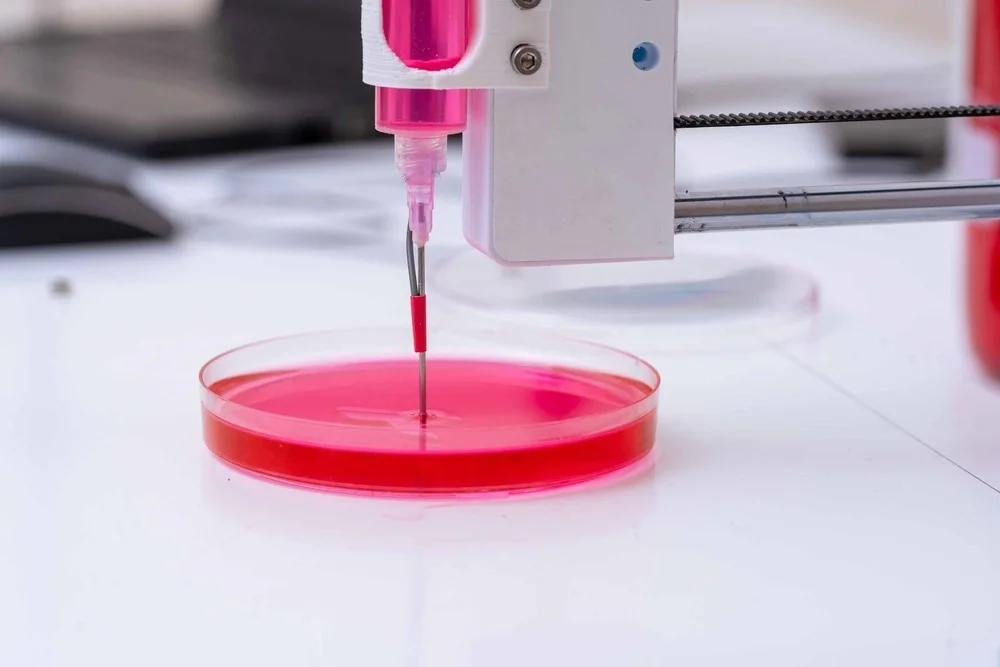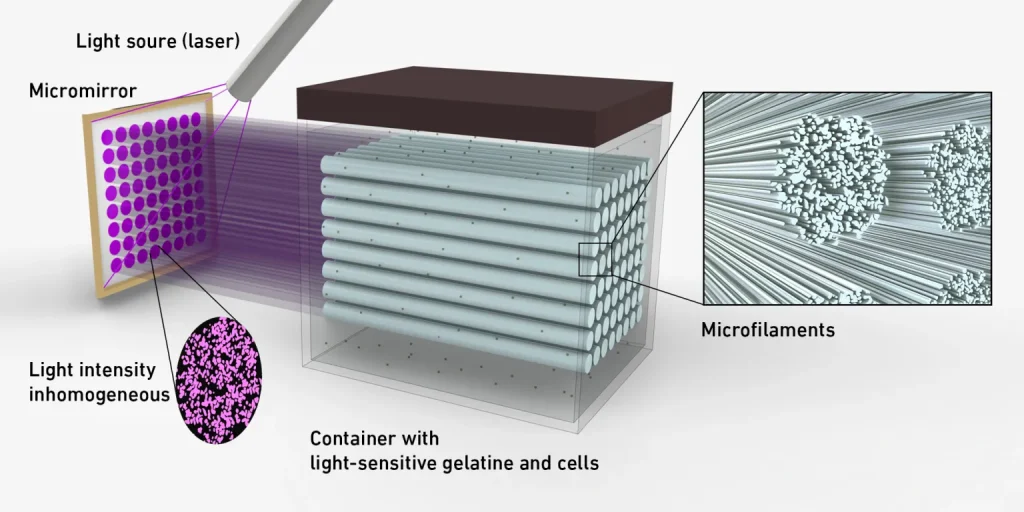In a groundbreaking advancement, Dr. Hao Liu from ETH Zurich is steering science towards a future where healing from injuries, curing diseases, and even lab-grown meat become more efficient and effective.
This vision is rapidly approaching reality, thanks to Liu’s innovative laser technology, which can replicate the intricate and natural architecture of human tissues.

The pioneering technique involves the use of a specially designed compact bioprinter.
This bioprinter utilizes laser technology to create microscopic structures that mirror the alignment and complexity of human tissues like muscles, tendons, nerves, and cartilage.
Dr. Liu’s team accomplishes this by employing a unique light-sensitive gelatin.
When exposed to a focused laser beam, this gelatin undergoes a transformation from liquid to solid, forming organized microfilament structures that serve as scaffolds for cellular growth.
These filaments imitate the fibrous components seen in natural tissues, promoting structured and aligned tissue development.
This innovative approach not only aims to generate human tissue models for high-throughput drug screening but also has broader implications.

The potential applications are vast, ranging from surgical replacements and medical research to pioneering developments in lab-grown meat.
Furthermore, this technology offers remarkable capabilities, such as repairing damaged nerves and modeling diseases for more effective drug testing.
The core of this technology lies in the filamented light 3D bioprinter.
This device harnesses a fascinating optical phenomenon: the inconsistency in laser beam intensity. The variation in energy within the beam allows the light-sensitive material to solidify unevenly, forming thread-like structures with channel-like spaces.
Cells cultivated on these scaffolds grow along these threads, leading to highly aligned tissue constructs.
Dr. Liu proudly highlights that while the optical phenomenon involved is familiar to physicists and material scientists, its application in biology is unprecedented.
ETH Zurich has already patented this promising technology, underscoring its significance in transforming biological research and applications.
As this bioprinting technology continues to take shape, it presents an array of opportunities for scientific research and potential solutions for global health challenges.
Liu’s work represents a remarkable step toward a future where the replacement of traditional laboratory methods with human-like tissue models becomes commonplace, paving the way for more humane and precise testing methods.
